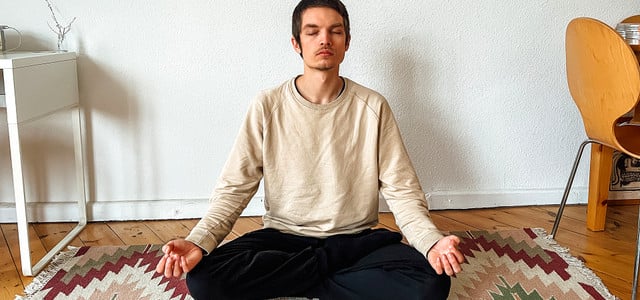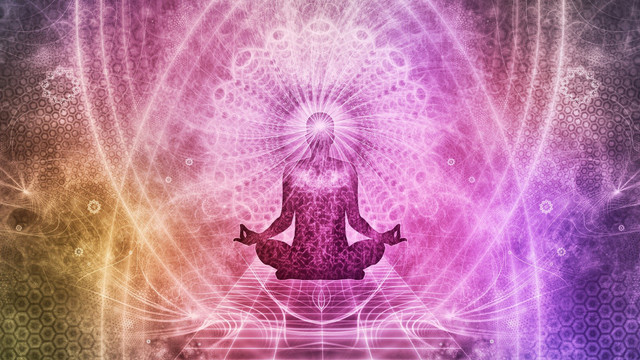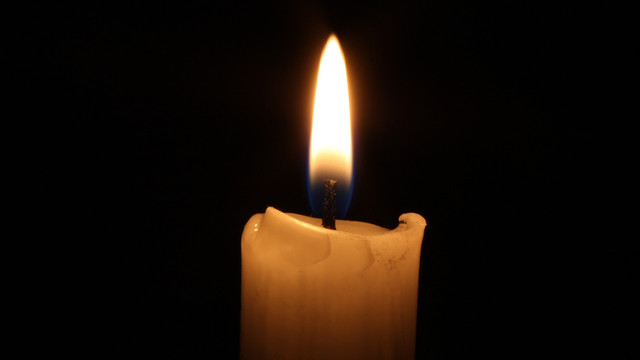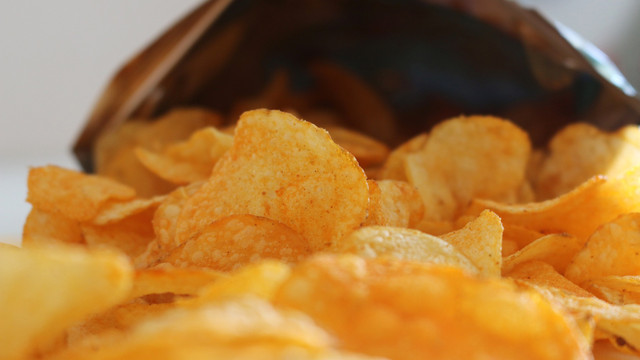
For a long time I didn’t believe that meditation could help me. But my self-experiment exceeded all my expectations: the daily ritual made me more productive, more relaxed and more motivated.
An old Zen proverb says, “Meditate for 20 minutes a day, unless you don’t have time, then meditate for an hour.” Those who haven’t felt the power of meditation themselves may think that’s utter nonsense. But after 100 days, during which I meditated consistently every day and mostly 20 minutes at a time, the above saying perfectly describes my new relationship to mindfulness practice. Since the self-experiment, meditation has become one of the most important parts of my everyday life.
But where does my enthusiasm come from? To explain that, I’ll now take you through the 100 days of my experiment – and a little beyond.
But before that, an important note: Just because I felt many positive effects during my self-experiment, these do not necessarily have to come from the meditation. My attempt was not a closed laboratory experiment, but took place in the middle of my everyday life. Every day is different and a person’s well-being depends on many different variables. Nevertheless, I am convinced that at least some of the experiences I have described are related to meditation.
Self-experiment Meditation: All good things come in threes
I misunderstood meditation for a long time. As someone who doesn’t place much value on spirituality, I saw it as just a relaxation exercise. I didn’t believe in real enlightenment anyway, and the thought of sitting still for minutes every day seemed like a waste of time. Still, I’ve tried it every now and then.
The first attempt was to look at guided meditations online. But the videos never explained what meditation really does and my motivation was quickly gone. A few months later, I tried meditation apps again. One of them managed to keep me going for at least a week. But that was more due to their chic presentation than to actual meditation successes.

In September 2022 I tried it for the third time. This time I’m talking about the psychiatrist Dr. Alok Kanojia, who reaches millions of viewers on Twitch and YouTube with videos and live streams about mental health, came across the topic. His analysis struck a chord with me. dr Kanojia swears by the positive effects of meditation on mental health, so I had to try it again.
In his estimation, many people would not find access to meditation simply because they had misconceptions about what it meant. So when meditating, one should not think about the result, not that one needs enlightenment to be successful.
Instead, it’s about the process itself, about just going through with it, no matter how restless you are and how untalented you feel doing it. The path is the goal and the mere fact that one dedicates oneself to meditation is already a success. This thought motivated me enormously and I actually felt the first results quickly.
Phase 1: Focus (Day 1-14)
I started the self-experiment of meditation with the exercise Nadi Shuddhi, a breathing technique in which one alternately closes one nostril when inhaling and the other when exhaling. I started with five minutes and gradually increased to 20 minutes. The tip from Dr. Kanojia helped me immediately: I no longer blamed myself when I couldn’t maintain my concentration.
No matter how many times or how long I strayed with my attention, as long as I made an effort to keep bringing the focus back and following through with the meditation, it was a success. From the first few times, I noticed that the ritual actually relaxed me. An effect that increased with increasing duration.

Slowly but surely, my fears and worries faded away. The chaos in my head cleared. Day after day I trained to focus my mind and so did my state outside of meditation. I learned how powerful this ability can be.
If I was afraid of the future, I just focused on the present. When I was procrastinating again, I focused my thoughts on the task to be done until I could no longer ignore it and therefore preferred to do it right away. Even when I was out and needed to go to the bathroom, my newfound willpower helped me just think of something else, and nature’s call quieted a little.
Phase 2: Euphoria (Day 15-28)
So after the first two weeks I was absolutely thrilled. But in the two weeks that followed, my euphoria increased even more. I incorporated another breathing technique into my meditation called Anuloma Viloma. This is an advanced variation of Nadi Shuddhi, in which one breathes alternately through each nostril without (!) holding it shut. Sounds impossible and maybe it is. But the trick is to direct your attention in such a way that it at least feels like the air is only going through one nostril at a time.
The exercise is a lot more intense because you have to concentrate all the more to maintain the illusion. In the moments when it worked, I felt completely free and happy. It was like a rush whose positive energy I spilled over into my everyday life.
Within four weeks I felt like a new, better person. I finally got the things I set out to do instead of putting them off over and over again. I no longer got caught up in harmful thoughts, but lived in the here and now. Never before had I experienced such a change in myself in such a short time – at least not consciously.
Phase 3: Routine (Day 29-50)
After the first intensive four weeks, it was already clear that meditation was the best thing that had happened to me in a long time. I was also relaxed about the fact that the next three weeks were rather unspectacular. The positive effects remained and even if there was no more happiness, I was always in a good mood. During this phase, I also tried out some new meditation practices. Some of them left me cold, others were more interesting. A further highlight was missing for a long time.
Phase 4: Self-Awareness (Day 51-60)
Between about days 50 and 60 of my self-experiment, I tried a very different type of meditation. If I limited myself to breathing and concentration exercises before, I now devoted myself to a method that serves self-knowledge. A kind of intuitive self-questioning, in which one detaches oneself from everything that defines one in everyday life. Job title, origin, relationship status, assets and even your own body are irrelevant. Who am I really? What are my essential qualities that are inseparable from me? Questions like these are explored.

Where I used to brood endlessly and question everything I thought I knew, I now found the answers to these profound questions incredibly easy. Suddenly everything seemed so clear. I gained valuable insights about myself, which still give me stability in life and help me to make decisions. Another side of the meditation I probably never would have believed in before trying it.
Stage 5: Boredom (Day 61-77)
In phase 5, the self-experiment took a long time. The initial euphoria had now evaporated. But discipline and habit ensured that I continued to meditate daily. Another effect was initially absent. Instead, I started to get bored for the first time.
Phase 6: Altered Perception (Day 78-80)
The boredom was broken only by a new exercise in the meantime. Trataka, another form of meditation, involves staring at an object, such as a candle flame, without blinking. When I carried out this exercise in a dimly lit room, another wow effect occurred: With increasing concentration on the flame, the room around it became pitch black. The light didn’t change, but my perception did.

I was completely amazed by this surreal appearance. I wouldn’t have believed my eyes capable of such a selective perception. Did I really have to be 28 to experience this effect for the first time? Once again, the meditation had taken me by surprise.
Stage 7: Fatigue (Day 81-100)
But for the last 20 days I really had to fight again. Now it wasn’t just boredom that curbed my urge to meditate, but mental exhaustion. I find it increasingly difficult to sit upright and still while meditating. I could hardly get my attention under control and I had no choice but to exert the discipline I had trained for 80 days in order to finish the attempt after all.
After several repetitions of various exercises, my body and mind simply didn’t feel like meditating anymore. So when I did my 100th session, I decided to stop for now.
Perhaps the positive effects on my mind would continue without a daily refresher, I thought. But unfortunately nothing came of it.
Epilogue: Without meditation, the demons return
About 10 to 14 days after the last meditation of my self-experiment, my focus weakened again. I let myself be guided by repression mechanisms again, devoted myself to unhealthy snacks and let irrelevant YouTube videos sprinkle me instead of concentrating on the things that were really important to me. I was in a much worse mood and even developed sleeping problems.

Of course, there could be other reasons for all of this. For example, after completing the experiment, I was on vacation for the first time, which shook up any routine. Also, I had caught a cold.
But when I last meditated again, within only 20 minutes I felt that calmness that accompanied me in the 100 days of self-experiment. I noticed again the incredibly calming and at the same time invigorating effect that meditation has on me. From then on it was clear to me: I will probably have to continue to meditate at least almost every day if I want to be the best version of myself.
Conclusion on the self-experiment: Meditation is my mental workout
There are certainly many ways to practice meditation, and everyone will have a different opinion of what it means. For me, meditation is primarily a kind of mental strength training. Whether or not I meditate determines how much I allow negative feelings and dopamine-rich distractions to affect me in my everyday life. Regular meditation has strengthened my focus, helped me to consistently be who I want to be and achieve what I set out to do.
However, as with physical fitness, I quickly fell back to my old level when I stopped exercising for a long time. So it means: stay tuned!
My self-experiment to meditate has already given me a lot. The better ability to concentrate is only one aspect. I have not tried many exercises with a different focus or have only touched on them. I feel like I’ve only seen the tip of the iceberg and I’m excited to see what the next 100 meditations have in store for me.
Read more on Techzle.com:
- Life without a car in the country: I learned that from my involuntary self-experiment
- Yoga Mats: These 8 are durable, sustainable, low-emission
- Is showering once a week enough? Editor makes self-test